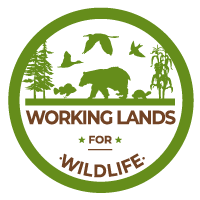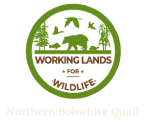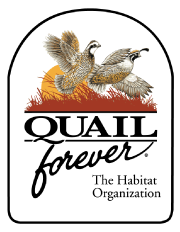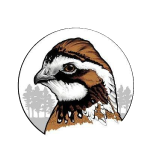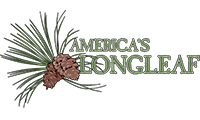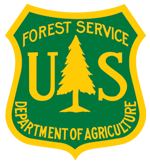It's All in the Soil
Identifying the soil type and condition on a property can then help landowners make the most impact when they are improving wildlife habitat on their land.
There are a variety of soil types across the US, within the bobwhite quail range and often within the boundaries of one property. Jacob McClain, South Carolina Quail and Pheasants Forever State Coordinator says, “Everything starts with soil. If the soil says it should be an upland pine savanna, that’s what it should be.” A simple way to think of soil types is by looking at what it’s made of. Does it have a lot of clay? Perhaps it’s sandy and drains water very quickly or it may have a lot of organic matter and hold on to water.
“Let’s say a landowner wants to manage for quail, but they need shrubby cover,” says McClain. “The soil type will help determine which species should be planted or encouraged. If the soil is wetter, they could plant elderberry whereas up on a hillside where it’s drier, they could let blackberries fill in an area. If there is sandy soil, they might want to plant plums because they thrive in those well drained, sandy soil types.”
These variations in soil composition can make themselves known through what vegetation is present and give wildlife managers clues on what types of plantings will create the biggest positive impact for wildlife. This was the case of the Bruce and Marla Mestad’s property in Missouri. When Senior Quail Forever Farm Bill Biologist Joshua Marshall visited their property he found a variety of native plants such as wild quinine, roundhead lespedeza, pale purple coneflower and rough blazing star amongst the non-native cool season grasses that had been planted there for cattle grazing. The presence of these native plants were an indication that their pasture was remnant prairie, that a seed bank of prairie species still existed in the soil and that given the right conditions, that dormant prairie could come back to life.
Knowing this, the Mestad’s were able to focus their efforts on prescribed fire, removing invasive species and reseeding rare native plants collected from one section of their property to other parts. Working with their soil and what was already available in the seed bank has proved to be a successful strategy.
“In 2019, Bruce and Marla didn’t have any quail on their property and now they hear them every year,” says Marshall. “Other wildlife such as woodcocks, turkeys, deer and monarchs all utilize the excellent habitat they are restoring. New native plants are seen each year and throughout the growing season providing critical habitat for declining species such and bumble bees and monarch butterflies.”
A site visit with a Quail Forever farm biologist can be a great way to identify what soil type is on a property and create a management plan which reflects that.
“Completing a thorough site visit and paying close attention to the soil profile, elevation, aspect, and woody and herbaceous plant species present give many excellent clues as to what the site should be,” says Ryan Parker, Quail Forever State Coordinator. “Additionally, Ecological Site Descriptions (ESDs) are created by USDA staff and partners and are available to find on sites like Web Soil Survey. These ESDs often contain state-transition models that paint a clear picture of the historical ecological conditions of an area, and where that site may be currently given years of agricultural practices or land use changes.”
Identifying not just the historical soil type that would’ve been there, but also the state of the soil is an important part of these visits.
“Use history may have altered not only the seed bank, but also the soil profile itself,” says McClain. “For example in the Piedmont where everything was farmed in the 1800s, in certain regions we lost 12-18" of topsoil which drastically affects our restoration efforts. These soils are so altered that we simply cannot expect an intact seed bank (its in the Atlantic Ocean now) and even if we did have an intact seed bank the soils are so altered that they likely wouldn't support the same vegetation community that once existed. Despite that, we can still make excellent progress in recreating what once was, but true restoration is unlikely.” Accurately identifying the soil conditions will inform what management practices will be undertaken on a property to improve it for wildlife.
Once a management plan has been created, implementing it is the next challenge. Through the USDA-NRCS's Working Lands for Wildlife (WLFW), landowners have access to both the technical assistance they need to make a plan and cost share programs to pay for getting that work on the ground. These programs focus on private lands in the Northern Bobwhite, Grasslands, and Savannas Framework, a core place of focus for bobwhite restoration.
“There are fantastic financial assistance programs for private landowners that are interested in ecological restoration,” says Morgan Meador, Working Lands for Wildlife Outreach Coordinator. “Contacting your local wildlife biologist will be helpful in determining which funding opportunities best suit the needs of the landowner.”
To learn more about how you can get to know your soil better and create a wildlife management plan, contact your local Quail Forever Biologist or USDA-NRCS office. For more resources on understanding soil and soil status, check out the USDA’s NRCS Web Soil Survey.


